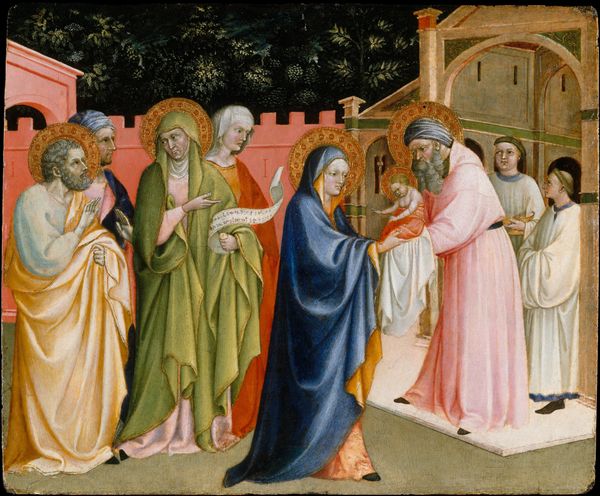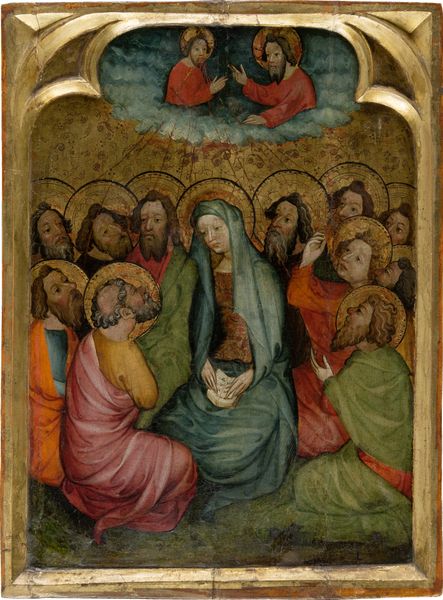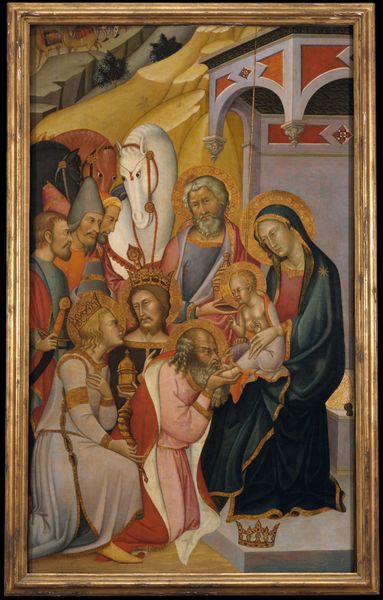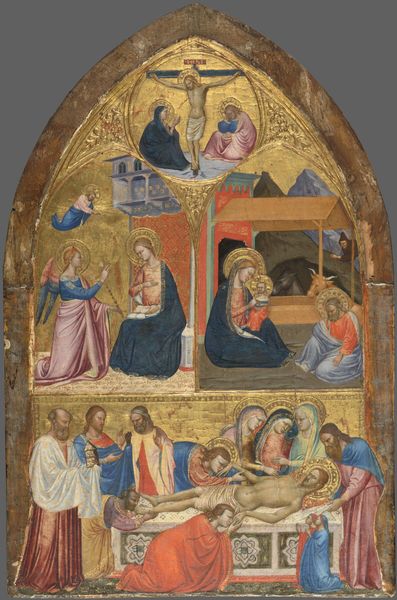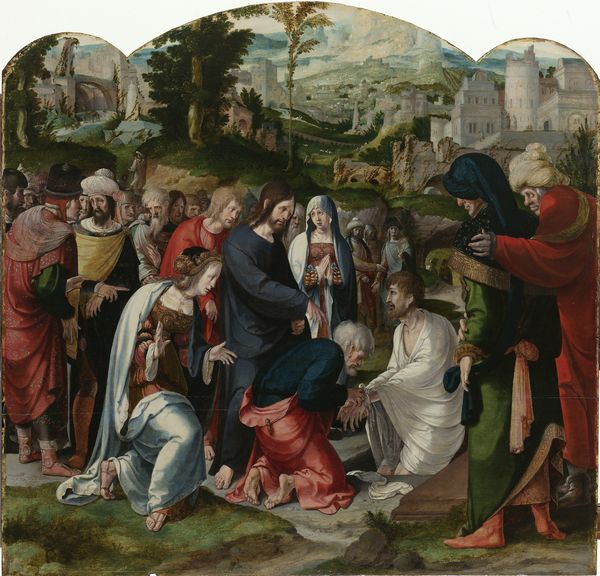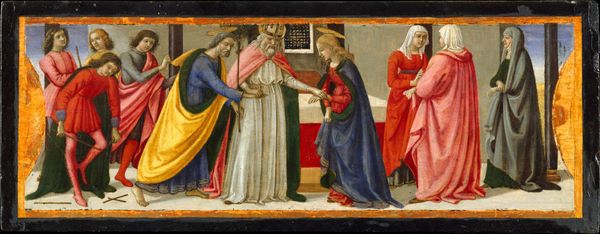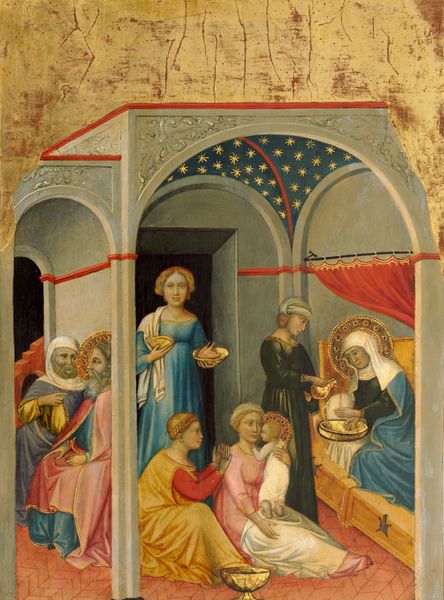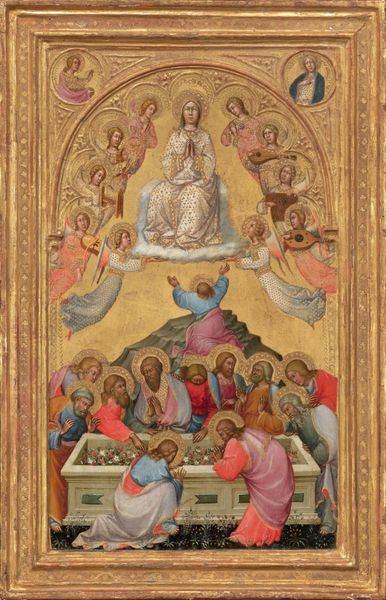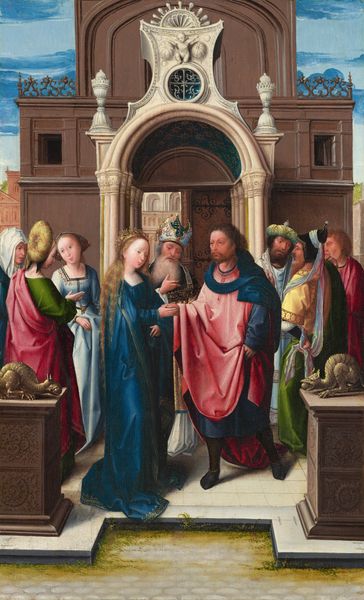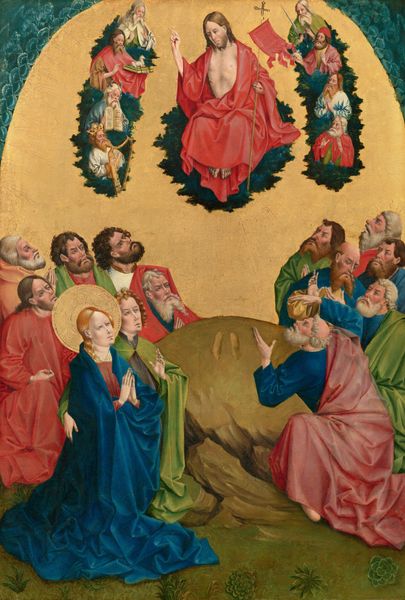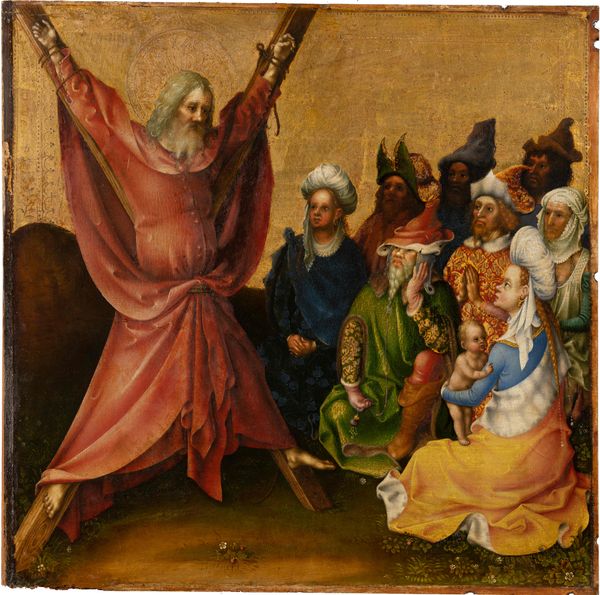
The Dormition of the Virgin; (reverse) Christ Carrying the Cross 1505 - 1515
0:00
0:00
tempera, painting, oil-paint, mural
#
allegory
#
narrative-art
#
tempera
#
painting
#
oil-paint
#
figuration
#
oil painting
#
chiaroscuro
#
history-painting
#
academic-art
#
italian-renaissance
#
mural
#
virgin-mary
#
christ
Dimensions: 55 x 53 1/8 in. (139.7 x 134.9 cm)
Copyright: Public Domain
Curator: Ah, yes. Here we have Hans Schäufelein’s diptych from the early 16th century. The piece we're viewing shows the "Dormition of the Virgin," paired with, on the reverse, "Christ Carrying the Cross". It's oil and tempera on wood. It now resides at the Metropolitan Museum. Editor: My first thought? What a contrast. Such a quietly grief-stricken scene; she's just ethereally sad. The halos, those mournful faces… You sense a deep pause. Curator: Precisely. The Dormition scene is heavy with iconographic significance. Note the palm frond presented to Mary; it’s a symbol of triumph over death, promising her ascension. These symbolic visual keys… unlock meaning across centuries. Editor: Symbols definitely deepen things but can almost create an emotional distance. Does anyone actually *feel* the loss behind all the pre-ordained imagery? It's lovely. Though… sterile in a way? The figures are beautiful, almost posed, with detailed renderings of fabrics and skin... It's technically brilliant. It is, indeed, a Renaissance masterpiece. Curator: Well, yes and no. There's both human sorrow *and* divinely orchestrated narrative. The book held by one of the apostles—scholars suggest it may refer to the liturgical readings for the Feast of the Dormition—isn't just an object; it connects this singular moment to larger theological frameworks. Editor: Which brings back to my point, almost a pre-packaged grief? Look, art's always in conversation with the viewer and the culture that spawned it, so you could look at how Hans balances this kind of almost commercial, picture-postcard image... Against, you know, real genuine weeping... It can go either way, right? Curator: Indeed. The cultural context illuminates its depth; it provides a frame and allows, or restricts, personal feeling. I do find beauty and sorrow. Editor: Agreed, they definitely coexist here in complex ways. Food for thought! A bittersweet masterpiece.
Comments
No comments
Be the first to comment and join the conversation on the ultimate creative platform.
